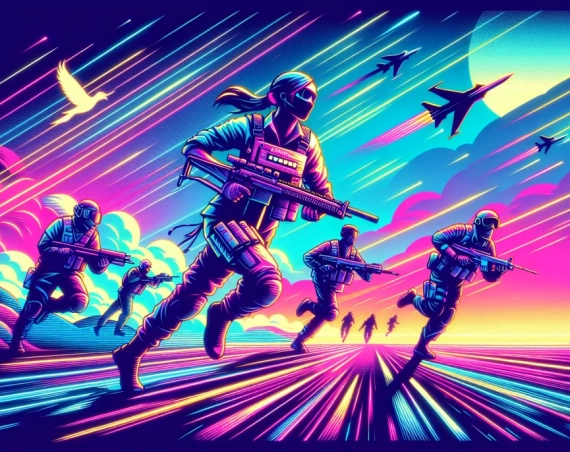
Why Beast of War Revives Jaws’ Legacy with Practical Shark Effects
After years of underwhelming shark-themed films marred by unrealistic CGI, the upcoming horror movie Beast of War promises a refreshing return to authenticity by employing practical shark effects, reminiscent of the groundbreaking techniques used by Steven Spielberg in his classic film Jaws.
The Enduring Impact of Jaws on Shark Horror Films
Steven Spielberg’s Jaws, released over 50 years ago, remains the gold standard in shark horror cinema. Its chilling suspense was enhanced by the use of practical shark models, creating a palpable sense of realism that CGI still struggles to replicate convincingly. As noted by director Kiah Roache-Turner in a recent interview with Bloody Disgusting, “The scary moment in Jaws is seeing the shark physically grabbing a victim. That sense of reality is what makes it terrifying.”
Beast of War’s Commitment to Practical Shark Effects
Determined to recapture this authentic fear factor, Beast of War enlisted Australian special effects company Formation Effects to build several sections of a life-like shark puppet. This includes a massive puppet controlled by a stunt diver and a mechanical half-submarine equipped with a dorsal fin that mimics shark movements in the water.
- Use of three separate shark sections for various shots
- Giant puppet shark animated by an underwater performer
- Innovative mechanical half-submarine that simulates realistic swimming
This approach strongly contrasts the over-reliance on CGI seen in most recent shark horror movies, where effects often appear artificial and fail to evoke genuine fear. Practical effects create tangible textures and interactions that enhance audience immersion, a fact supported by industry experts and audiences alike.
Plot and Setting: A Harrowing Battle Against the Ocean’s Deadliest Predator
Beast of War draws inspiration from the real 1942 sinking of the HMAS Armidale during World War II. The story follows Australian soldiers stranded at sea after their warship is destroyed by Japanese fighter jets. Their plight worsens when a massive, bloodthirsty shark is attracted to the survivors, forcing them into a desperate fight for survival.
Key Elements of the Film’s Narrative:
- Historical backdrop of the HMAS Armidale’s wartime sinking
- Survivors stranded in open water, isolated and vulnerable
- Introduction of a realistic, formidable shark antagonist
- Themes of human resilience and the primal fight against nature
How Practical Effects Elevate Horror Cinema in the Digital Era
The resurgence of practical effects in modern horror reflects a growing recognition that tangible, physical elements conjure stronger emotional responses than CGI counterparts. Films such as Guillermo del Toro’s Crimson Peak and the recent The Invisible Man remake have utilized practical effects to great acclaim, leading to enhanced audience engagement and critical praise (Source: Hollywood Reporter).
Moreover, practical effects demand meticulous craftsmanship, often requiring innovative engineering and skilled puppeteering. This dedication not only honors classic filmmaking traditions but also pushes the boundaries of current technology.
Production Challenges and Cinematic Innovations
Interestingly, Beast of War experienced unique production shifts. Originally intended to be filmed in Malta’s massive water tanks—also used for Ridley Scott’s Gladiator—the project lost access to these facilities when Steven Spielberg’s Jurassic World: Rebirth took over (Spielberg serving as producer). This turn of events led the filmmakers to shoot in an indoor tank in Australia instead.
Rather than seeing this as a setback, the crew embraced the atmospheric fog naturally forming in the Australian tank, incorporating it into the film’s eerie aesthetic. This adaptation highlights how constraints can spur creativity and result in novel visual storytelling techniques.
The Future of Shark Horror Movies: A Practical Effects Revival?
The success of Beast of War in using practical shark models could signal a broader trend in shark horror filmmaking. Viewers are increasingly craving authentic scares that heightened practical effects can provide. Since CGI often dates films quickly due to evolving technology, practical effects can help create enduring, timeless horror experiences.
Experts in film studies emphasize that realistic effects help maintain suspension of disbelief, intensify tension, and foster emotional investment (Source: Journal of Horror Studies).
Summary
Beast of War’s dedication to practical shark effects demonstrates a profound respect for Spielberg’s Jaws legacy, reminding audiences why tactile realism enhances horror storytelling. By blending historical wartime drama with groundbreaking practical effects, the film promises a gripping, immersive experience that redefines shark horror for the 21st century.
As the industry continues to balance innovation with tradition, practical effects are proving indispensable in delivering genuinely terrifying cinema that resonates with audiences.


